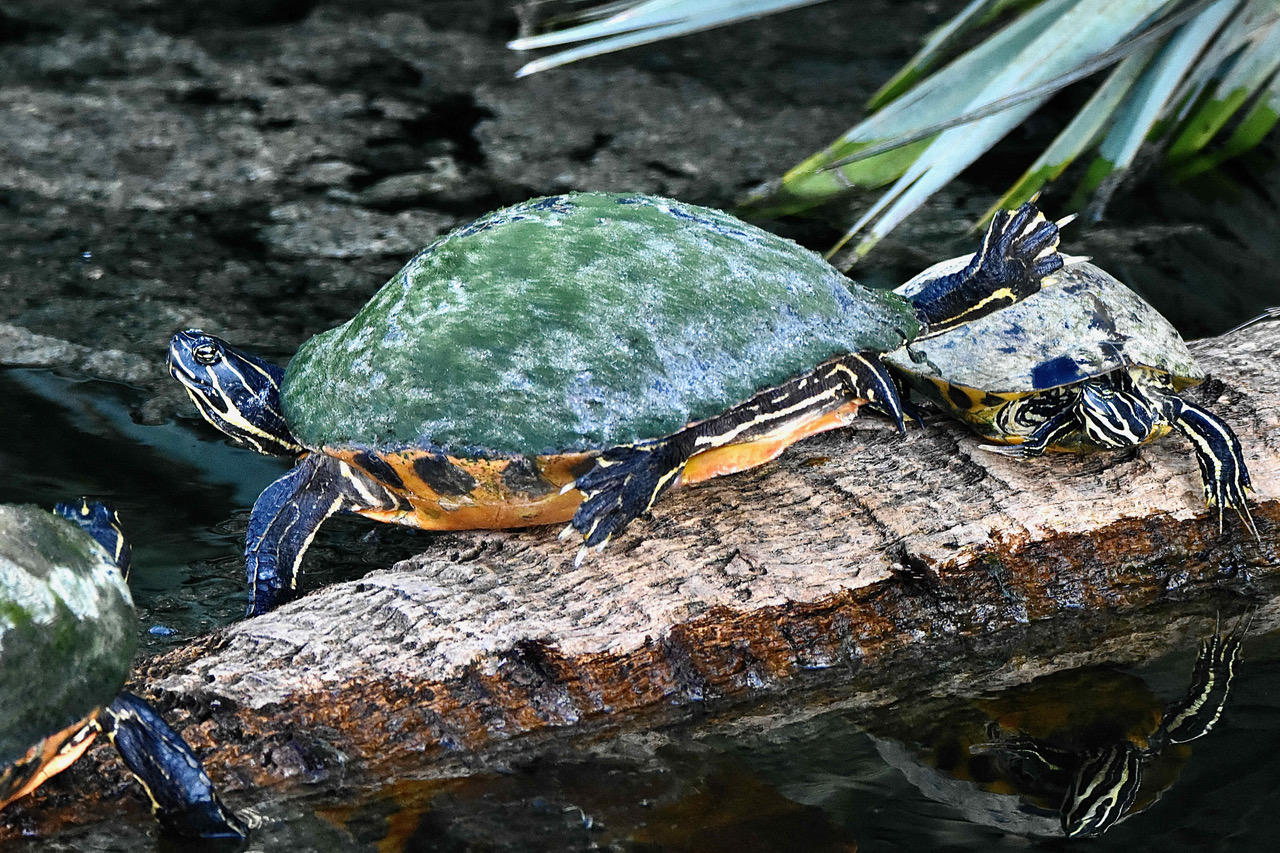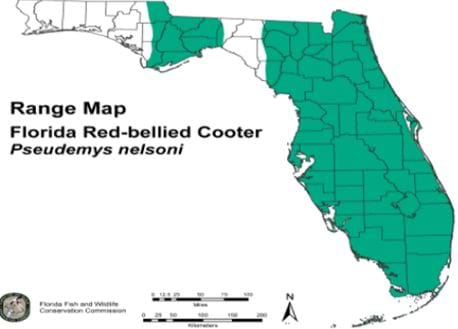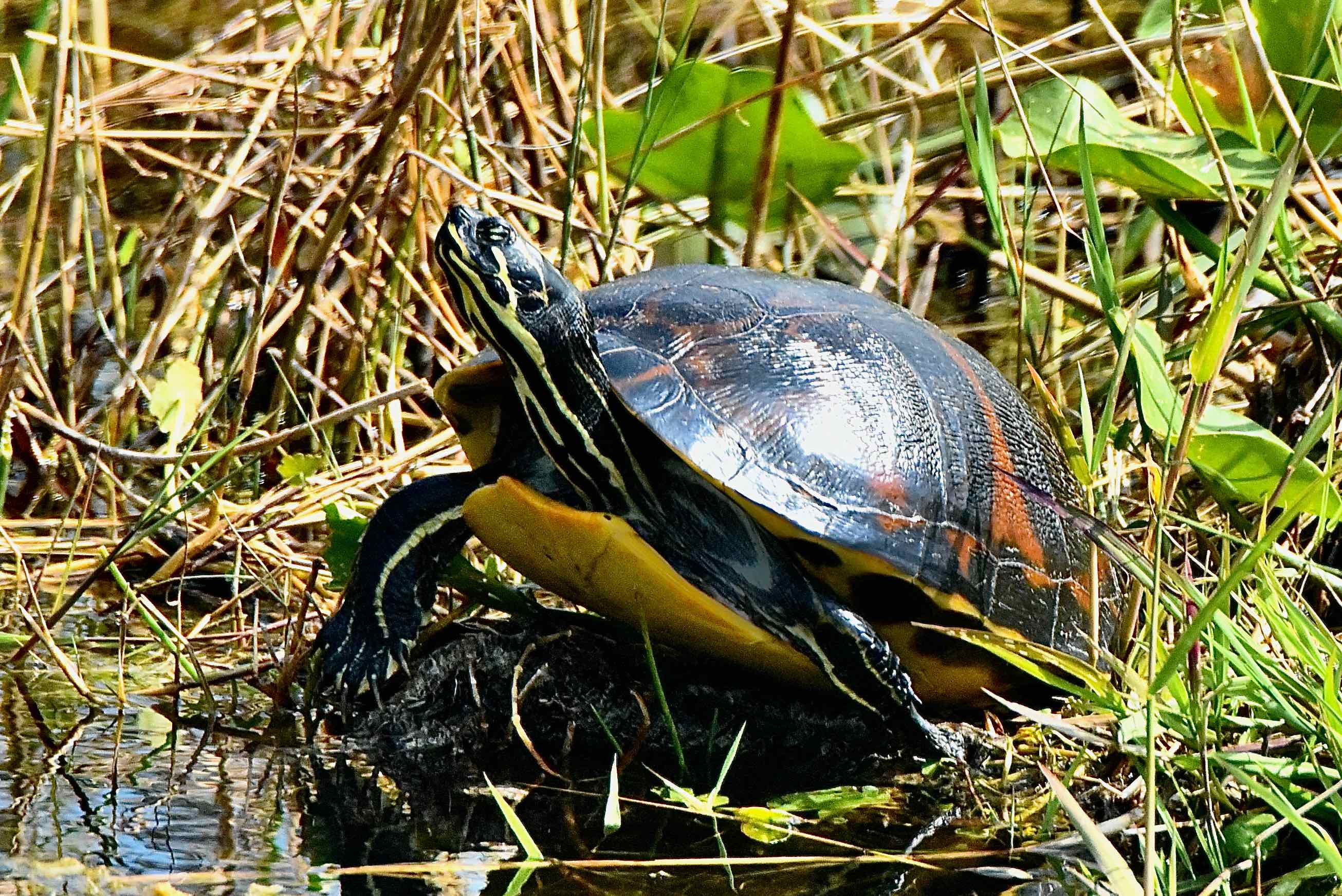
Florida red-bellied turtle, photographed at Green Cay Nature Center, Boynton Beach, Palm Beach County, in March 2016.
This is a turtle seemingly with a suicidal bent. But if you think about it, there is a certain method to its madness.
We’re talking about the Florida red-bellied turtle, AKA Pseudemys nelsoni and its habit of attempting to lay its eggs in alligator nests. If you don’t know, mom alligators never wander far from their nests and aggressively defend them. At times, they'll lie on top of these mounds of dirt and decaying vegetation to lend their developing offspring a little extra warmth. The bottomline: odds are slim that a turtle is going sneak by mom.
And mom gators don’t take kindly to anything they perceive as a threat to the wellbeing of their offspring, and on top of that, figuratively speaking, turtles rate high on an alligator’s menu options.
So what’s behind this bit of turtle insanity? We’ll get to that in a bit.
Florida red-bellied turtles, are, as you would expect, natives of the Sunshine State, found from southern Georgia’s Okeefenokee Swamp, through the Peninsula to the Everglades. There’s also a population in the Panhandle, the existence of which is a bit of a puzzle to scientists, because it sits about 100 miles west of the Florida red-bellieds’ main territory. Was it isolated because of an ancient change in sea levels? Is it the result of a naturally occurring migration or dud us humans accidentally or deliberately release turtles into the area? Don’t know.
There are nonnative populations in Central Texas and the British Virgin Islands.
The Florida red-bellied is one of three species of cooters native to Florida. The other two: P concinna, the river cooter, and P floridana, the Florida cooter. Cooter, by the way, means river turtle, and derives from kuta, the word for turtle in two African languages and brought to the United States through the slave trade.
The Florida red-bellied turtle gets its name from its reddish-orange plastron, the shell that covers the abdomen, or underside of the turtle. They also have some red coloring on the carapace, the part of the shell covering the back, which might be obscured by moss or mud. There’s prominent yellow striping on the neck and face and on the legs. They have a deep notch in the upper lip and the stripes about the eyes form an arrow.

They are fairly large, with a carapace reaching between 10 and 14 inches inches in length, and weighing between three and 10 pounds. The carapace also has a high dome shape to it. Females are slightly larger than males, but males have longer claws on their front legs, which they use to entice the ladies into mating. Take a look at the photo at the bottom right and note the difference in the claws on the turtle to the front and the one in the rear. I'm guessing that they're doing something more than just basking. Not a great photo but it does the job.
Favorite habitats include slow-moving rivers, creeks and springs, ponds, lakes, and canals with plenty of vegetation. Florida red-bellied turtles are social animals, and are often seen sharing a log with others while they bask.
Adults are mainly vegetarian; they’ll eat invasive plants such as hydrilla and water hyacinth, so they play a role in keeping our waterways clear. Juveniles, on the other hand, will eat insects and small fish. In turn, they have a long list of enemies who see them as a meal, including skunks, foxes, snakes, herons, raccoons and more.
Females reach sexual maturity between six and eight years; males at three years. Maximum lifespan is believed to be 40 years, according to the Florida Fish and Wildlife Conservation Commission.
Females will lay between three and six clutches a year, each with between six and 30 eggs each; the eggs will need 45 to 80 days of incubation to hatch. Temperature is a major factor in determining the length; temperatures within the nest determine the sex of the developing embryos, warmer female, cooler males.
Like with other turtles, reproduction is a numbers game. They need to lay a lot of eggs because most will be destroyed before hatching, and those that do hatch face a tough fight to reach maturity.
Which brings us back to the top and the seemingly suicidal habit of Florida red-bellied turtles attempting to deposit their eggs in closely guarded alligator nests. The answer as to why is simply because alligators guard their nest regardless of who’s eggs they might be. If a red-bellied mom can successfully lay eggs in the gator nest it will raise the odds that they’ll at least hatch.
We’ve seen red-bellied moms literally swarm a gator nest. The interesting thing was the reaction of the gator mom. She would grab the intruders with her mouth, but instead of killing them, she merely tossed them back into the water, where, of course, they’d mount a second charge, and probably a third and a fourth. The red-bellied’s seemingly suicidal behavior apparently isn’t so crazy after all.
One more note about the red-bellied turtle’s body: its carapace is thicker than its cooter cousins. Some theorize that it’s the evolutionary result of living in the midst of alligators.
Florida red-bellied turtles are also known as Florida red-bellied cooters. They are members of Emydidae, a family of turtles.



